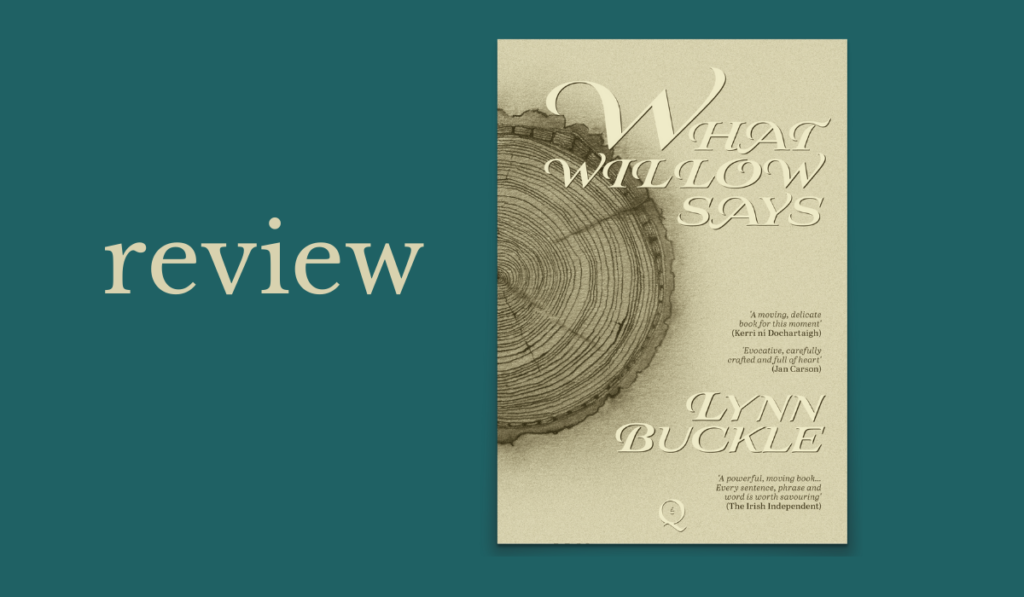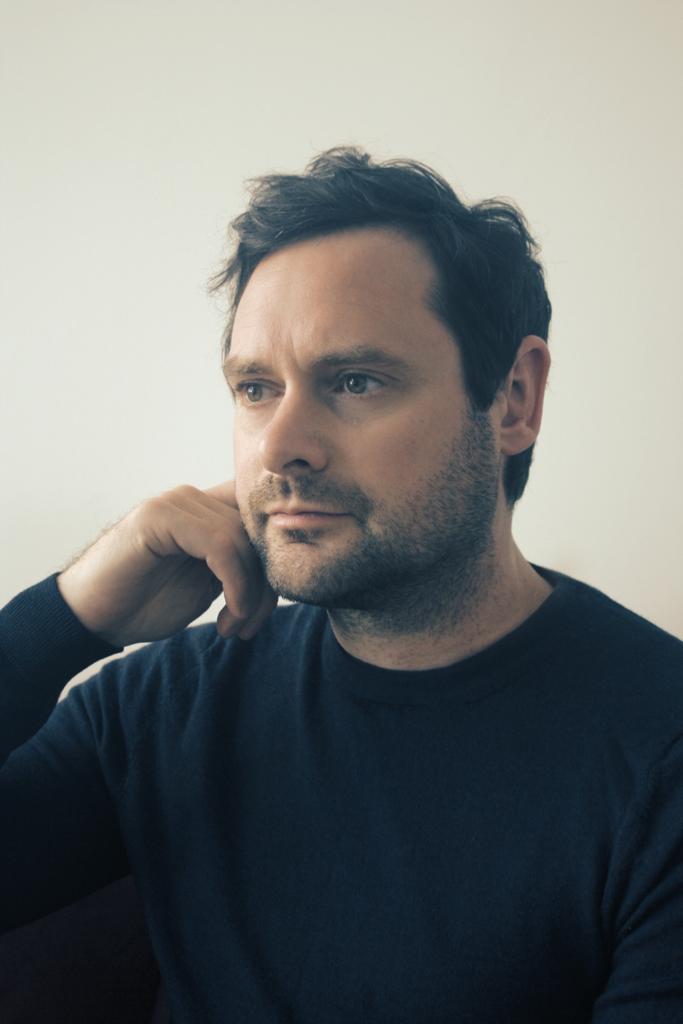
What Willow Says|Lynn Buckle|Époque press, 2021|ISBN 9781838059286|£7.99
by Eoghan Smith
What Willow Says, the second novel by writer and artist Lynn Buckle, is a contemplative and lyrical exploration of the intersections of language, nature, love and grief.
Set in the boggy Irish midlands over the course of a few months, the book centres on the tender relationship between a grandmother and her deaf granddaughter, who she is raising following the death by drowning of the girl’s mother.
The story, structured as a series of diary entries that each record the wind speed, weather and general outlook, is told from the grandmother’s perspective as she completes an illustrated project called ‘A Visual Compendium of Native and Non-Native Trees’ and grapples with learning sign language to better communicate with her granddaughter.
Although What Willow Says is a short book, coming in at just over one hundred and sixteen pages, there is a density to the prose that both requires and rewards patience and slow, careful reading.
The novel invites us to stop, to see, to notice, to listen. Recordings in the diary entries focus on particular events, such as the noise of walking over a forest floor or the auditory experience of the air moving through pine trees:
“…the secret talk of coniferous trees is in their collective quiet, bedded deeply in insulating floors of browned needles. Even the pines’ cracked bark serves to dampen down and slow the travel of sound. Until the wind arrives. It doesn’t so much as slough through the sedentary boughs, as hiss and swish and slither sideways. It hits in sneaky whistles and is gone as soon as I can find it.”
In such alliterative, rhythmic passages – and the novel is textually layered with such – attention is drawn not just to our sensory experience, but also how our senses mediate the world to us and how that world is then communicated.
Language
And here language attains a vital, or perhaps, intensified significance. What Willow Says is overtly a celebration of the richness of languages within the compass of the novel: English, Sign, and to a lesser extent, Irish. Yet Buckle is a writer who is interested not just in the sound, visuality, texture, shape and function of language, but also the idea of it, its elusiveness, limitations and innumerable possibilities for expression and discovery.
She is a deft and observant writer, unafraid to let the pace almost deaden, to let stillness fall over a scene, to orientate the reader’s eye to the sound and shape of words in the mouth or on the hands.
The frame of language is expanded beyond the human out into the environment around us, into the bogs, the forests, the animals. Nature too, as Buckle has explained, is ‘a heuristic device and vehicle for communication’.[1]
Everywhere, the landscape is saying things, if one only takes the time to learn the language. This is a fundamentally ethical idea, encapsulated in the title of the novel, and one that is beautifully portrayed in the frequent images of the grandmother and granddaughter trying and sometimes failing to capture the sounds of the wind soughing through the trees.
It is there also in the grandmother’s efforts to improve her Sign and it is there in the words they invent – bringing expansions of vocabularies – with each other. As the grandmother struggles to hear the trees and, relatedly, to learn Sign, she is assured by her granddaughter that she will, ‘with practice’.
Climate crisis
Although What Willow Says is not a direct political call-to-arms for environmental activism, the book is political in its foregrounding of nature and how a contemporary species of nature writing might respond in other ways to the challenges of the climate crisis.
The novel avoids the tactic of catastrophizing in an ever-more strident voice though there are moments of ecological trauma in the ‘screaming’ of trees being cut down.
What Willow Says also eschews any romantic evocation of the sublime. Instead, What Willow Says perhaps suggests is that literary approaches to the environmental crisis can emphasize active learning and self-education: through taking time to pay attention, to observe, to learn, and, significantly, to communicate.
Importantly, the novel is also accepting of the inevitable passage of the living world into the dead, and there is palpable tension between the continuity of ‘Nature’ and the discontinuity of each living being. While there are occasional, sudden irruptions of images of closed-down peat factories or of council workers ripping up suburban landscapes, fundamentally, as Buckle has explained, What Willow Says is
“a simple celebration of nature, eulogising a changing landscape which is quickly disappearing as it transitions, is repurposed, and further exploited by humans. To know and to love our surroundings is the first step towards wanting to preserve it.”
Traces of the past
This desire for preservation is counterbalanced in the novel by knowledge of inexorable shift (signalled, for instance, by the diary entries that record the passing of time). The novel is also filled with references to Irish mythology and the ancientness of the landscape, traces of the past which speak to some sort of underlying primordial identity that is scarcely retrievable.
Yet the midlands bogs of the novel’s landscape are preservers of the past as well as repositories of death: fleeting Heaney-esque references to bog bodies are not just intimations of the grandmother’s drowned daughter but to wider awareness of how the past can be both perceptible and irrecoverable.
As the time passes and summer becomes winter, so too does life inevitably turn to death.
Everywhere in nature – in the innumerable frogs and in the dark bogwater – there are poignant reminders of the granddaughter’s dead mother. Peripheral characters maintain a spectral presence: the grandmother’s deceased husband, her other emigrant children.
This is a feature of the intensity of the novel’s particularly sharpened eye that falls on the evolving relationship between the ailing grandmother and her granddaughter. At the centre of the book are these two people who are bound together by family, love and care. The seasons turn. The trees talk in the wind. In this brief and moving novel, profound things are spoken.
[1] I am grateful to Lynn Buckle for giving me some insights into What Willow Says.

Eoghan Smith is the author of The Failing Heart (Dedalus 2018). His second novel, A Provincial Death, will be published by Dedalus in 2021.












